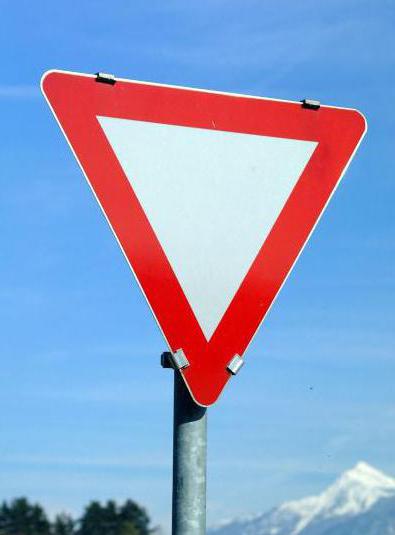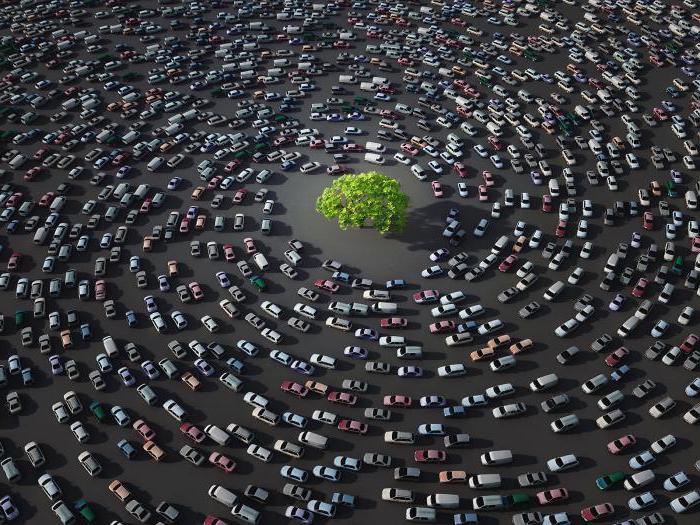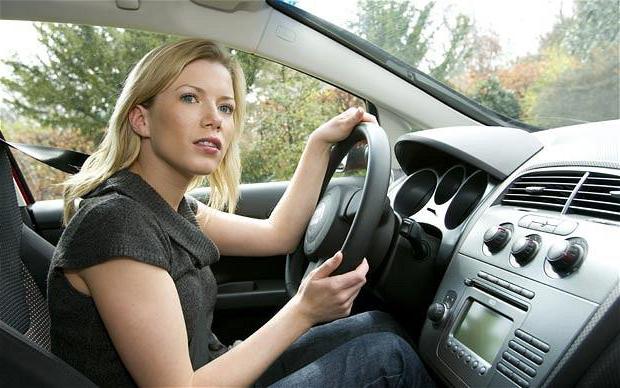Roads intersect to form intersections. And it is quite natural that cars can meet there, wanting to move on in different directions. Sometimes, if the traffic is not too intense, drivers can solve this problem among themselves. But more often you can’t do without special signs. So, let's talk about who and in what situation goes through the intersection first.
Priority signs
Probably, even the children know about the “Main Road” and “Give way”. These signs are bright and markedly different from others, and also have a very simple meaning. However, they are very important and determine which of the vehicles at the intersection should overcome it first, and which - the last. Without this, real chaos would occur on the streets, and accidents would occur constantly. Fortunately, these, as well as other signs of traffic priority exist and are actively used, so that troubles can arise only when some driver decides to ignore them for one reason or another.
There are relatively few of them, most of them are very recognizable in shape and coloring, so it is very difficult to mix them up with something else even from afar. And this is just very important when it comes to setting the order of travel where there is a need for such a measure. So, how do priority signs let drivers know who should drive when? It is worth talking about each of them in more detail.

Features
The main road signs of priority are well recognizable - this is part of their function, because they must attract attention:
- "Main road" and "End of the main road". These two signs represent an equilateral yellow rhombus with a wide white border. In the second case, strikethrough also takes place. The first means that when driving on the road indicated by this sign, the vehicle has the preemptive right to cross, for example, an intersection. His action, as a rule, only applies to him. It can be combined with other characters.
- "Give Way". It is an equilateral triangle of white color with a red border, placed on one of the vertices. It means that at the nearest intersection, you must wait until all vehicles have completed their maneuvers before crossing it. May be supplemented by others signs of information character.
- "Stop", or "No stopping is prohibited." This traffic priority sign is found a little less often than already mentioned. It gives the driver information that before you start driving at the intersection, you must stop and make sure that there is no interference. In fact, it is similar to the previous sign, but is installed, for example, where there is no way to provide sufficient visibility before crossing roads.
- Advantage over oncoming traffic and Advantage of oncoming traffic. Two similar signs allow you to disperse in narrow places of the road. Not to get confused is very simple - whose arrow is longer (or not red), that is the main one. The one who is given the advantage will see a blue rectangular sign, and the one who is forced to yield will see a round white-red.
- "Crossing / adjoining a secondary road." This group of signs in the form of a white triangle with a red border schematically indicates how the intersection looks ahead in terms of the order of its intersection by vehicles. As a rule, they are rarely seen within settlements, but outside the city they are quite common.
In Russia and in the world
In traffic rules of the Russian Federation, priority signs, like many other signs, correspond to the Vienna Convention, which has been in force since 1978. This document unified the signs along the roads, so even when traveling abroad, you are unlikely to find completely incomprehensible ones. They may differ in some details, for example, have not a white, but a yellow background, but it will still be clear what they mean. In the United States, the standards are somewhat different - there the signs of the priority of traffic are represented only by the names “Give way” and “Stop”. Nevertheless, as practice shows, this is enough for them, especially since they can be supplemented by information signs.

When they do not act
Everyone who listened attentively to the lecturer at the classes in the driving school knows that the priority signs of traffic rules are not always valid. There are frequent cases when drivers ignore them and move contrary to their instructions, without violating the rules. Is it possible? Yes, of course.
Firstly, if a traffic light acts at the intersection, you need to follow its signals, even if they contradict the signs. They need to be paid attention only if it blinks yellow.
Secondly, the presence of the traffic controller at the intersection automatically means that one should obey his instructions, and not traffic lights or signs.
Thirdly, if one of the participants in the movement is a special vehicle of certain types, it has an advantage regardless of what the priority signs say. So, Flashing Light complete with an audio signal - this is an automatic skip out of turn.

Right hand rule
Right-hand traffic is accepted in Russia, and the driver is in the car on the left, and this means that what is happening on the opposite side is worse visible. That is why there is a so-called "interference on the right" rule. This is true, for example, when at the intersection two participants, being on the main road opposite each other, must leave: one needs to go straight, and the other to the left - to the secondary. The one who turns if he goes first will have a hindrance on the right and poorly control the situation, so it is logical if the advantage is given to someone who does not get into such a situation. By combining a traffic priority sign set in front of the intersection with the aforementioned rule, the drivers determine the sequence of travel.

Consequences of ignoring
In the simplest and best case, if the reaction of other participants in the movement is good enough, it will be possible to get rid of a spoiled mood. In more complex situations, a collision is likely to occur and the traffic police will have to explain what happened. So it’s worth remembering and following the signs of priority.
